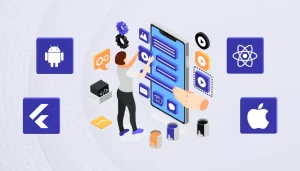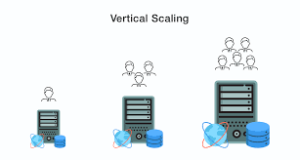Embracing Digital Transformation with Jain Software
In Business, Official BlogIn this world of stiff competition and advancement in technology, business have been disturbed. Digital transformation is not a latest famous buzz word but it is a major process by which an organization can empower itself with the help of technological facilities for organizational effectiveness, innovation, and enhancement of customers’ satisfaction. As a digital solutions company serving clients globally, Jain Software well appreciates the strategic importance of digital transformation in entrepreneurship today. Mainstream IT solutions and consultancy for your business enable us to assist this intricate process and successfully complete digital transformation. 
Understanding Digital Transformation
Digital also well means the reinvention of a business by digitally enabling every process in an organization and throughout a value chain. It’s about having different line of the thoughts, introducing more and focusing on the changes in organizational behavior, gaining more flexibility in response to customers and competitors.
Why Digital Transformation Matters
Improved Efficiency: Implementing ERP is a more specific type of automation which minimizes the possibility of human mistake and allows the staff to concentrate on value-added activities.
Enhanced Customer Experience: A respondent can be delighted simply because his call was answered quickly, or he was personally attended by an agent instead of general auto- attendant greeting.
Increased Agility: This makes it easier to identify key success factors such as the ability to rapidly respond to a change in the market or when new technology surfaces.
Data-Driven Decisions: Incorporation of data analysis leads to positive changes because informed decisions produce effective results.
Innovation: Innovation can be characterized as a cultural concept, which means that through the integration of modern technologies into the company, an organization can facilitate the appropriate cultural change and stimulate innovation among a team of employees.
About us Established in 1995, Jain Software has always been and will always remain a comprehensive tech solutions provider that consistently seeks to make organizations digital through our innovative solutions.
Over the years, as a software development company, Jain Software has embraced the need to offer end to end solutions for organizations seeking to traverse to the digital era. As your business starts its digital transformation journey, we focus on a three-layered approach to address all your needs: strategy formulation, technology consultation, and effective implementation.
1. Strategic Planning
Digital transformation entails the use of technology to improve business outcomes and as such should be backed by a good plan. Industry experts engage and collaborate with your staff to recognize business objectives, restraints, and prospects. Our first approach entails a deep understanding of the current operations and the existing information technology environment for purposes of knowing the opportunities to make improvements on.
Key Steps in Our Strategic Planning: Key Steps in Our Strategic Planning:
Assessment: Knowing your starting position and realizing what issues are there, which affects your business.
Visioning: One of the critical processes to be noted in managing change involves defining the future strategic direction as well as setting objectives/expectations.
Roadmap: Outlined below is a plan of execution on how to address every problem regarding your digital transformation initiatives:
2. Technology Integration
Choosing the right technology is highly essential when going for digital change. In fact, at Jain Software, we utilize the best technological features to realize customized and world-class solutions for your enterprise. Special focus areas cover Artificial Intelligence, Machine Learning, Cloud Computing, Internet of Things, and Blockchain technologies.
Core Technology Services:
AI and ML: Automate the work and grab actionable insights about the performance of business using the analytics.
Cloud Computing: Redesign key business processes to promote scalability and flexibility through the use of cloud solutions.
IoT: Join devices and systems to be able to collect read and analyze data in real time.
Blockchain: Promote security of operations and / or transactions, as well as clear and efficient forms of communication.
3. Implementation and Support
In the words of Arthur, Ledermaier, and Sokolowski, digital transformation is not accomplished overnight and cannot be implemented haphazardly; it demands careful planning and constant reinforcement. Dear Sir or Madam, We make sure that the new technologies becomes a part of your company’s environment so that it will not cause much disturbance to the system’s operation but will effectively contribute to the improvement of the existing environment.
Implementation Process:
Development: Other areas include building custom solutions based on a strategic plan that has been developed.
Testing: Despite the fact that it considers only the first growth principle, intensive testing to check for functionality, security, and performance is crucial.
Deployment: Implementing the system in a way that would not disrupt the normal business practice for as little time as possible.
Training: Giving your team a detailed briefing on how to go about the new change and intake.
Ongoing Support:
Maintenance: New features in the form of improved usability and insulation against viruses for systems, plus timely sustenance for constant optimized operation.
Troubleshooting: The last of the factors is the ability to address any eventuality that may occur post-implementation.
Optimization: They deviate frequently to enhance efficiency, and innovate by adding extra capabilities where possible.
Case Studies: Tales of success in Jain software
1. Transforming Retail Operations
A well-known retail chain firm approached Jain Software to help them improve customer satisfaction and add efficiency to it working. Further to that, we were able to deploy an advanced customer analytics system powered by Artificial intelligence and deploy smart inventory management and control IoT gadgets.
Results:
Improved Customer Insights: The AI benefitted the platform whereby customer information was acquired for advancing tailored marketing approaches.
Efficient Inventory Management: All the smart devices in the IoT environment enhanced the actual tracking of inventory levels to minimize occasions where stockouts or overstock was experienced.
Enhanced Customer Experience: Improved response speeds and something akin to actual, one-to-one communication proved to increase customer satisfaction much more.
2. Revolutionizing Healthcare Services
A healthcare provider turned to us for help in managing and updating the patients files to enhance the delivery of services. We came up with a web-based patient management system and integrated the use of Machine Learning/Artificial Intelligence for preemption in care provision.
Results:
Seamless Access to Records: Overall, the cloud-based system also assisted the healthcare professionals in gaining safe and immediate access to patient records which would help in the coordination of patient care.
Predictive Analytics: Application of artificial intelligence in healthcare enabled the forecast of the patients’ requirements to save time on treatment.
Reduced Administrative Burden: Automations of several procedures made some of the administrative responsibilities to be handled by professionals instead of the workers freeing more time to attend to patients with their needs.
3. Optimizing Manufacturing Processes
There was a need for a manufacturing firm to transform its working in an effort to respond to competition pressure. The business uses real-time monitoring over the Internet of Things that was introduced and deployed by Jain Software for the business and applied machine learning in enhancing the manufacturing operations.
Results:
Real-Time Monitoring: Smart connected devices offered actual-time tracking on equipment conditions to help cut on breakdown hours.
Process Optimization: Issues as to where and how resources and production lines were being used where addressed by the machine learning algorithms and once these problems had been detected then the most efficient means by which the particular production line was to be used was determined.
Cost Savings: They include increased efficiency, which brought about economical benefits in the form of reduced cost and increased speed of production.
Preparing for the Future
Digitalization is not an event but a process that has to be carried process constantly. Businesses therefore have to adapt in track with the fast growing evolving technologies of the world. Based on the above analysis, Jain Software is willing to be your companion on this road map and ready to supply you with the right tools and services that you require to succeed in this age.
Key Trends to Watch
AI and Automation: Future development in artificial intelligence is expected to deepen the level of automation of important processes more as well as improving decision-making assets.
5G Connectivity: The increased coverage and connection of many devices with the availability of 5G networks will help in the transmission of data.
Edge Computing: Storing information near the location where it is gather would therefore enhance the rate of response because less bandwidth is used.
Cybersecurity: It clearly indicates that as the level of digital transformation rises, the necessary and sufficient controls over cybersecurity will be pertinent.
Sustainable Technology: Environmental friendly technologies are accurated to serve the same purpose as conventional technologies however they will enhance business sustainability.
Conclusion
There cannot be any doubts about the necessity of the digital transformation, as it might be a crucial element to remain competitive and relevant in the modern world. Jain Software has a holistic approach that will help you avoid pitfalls common with other companies by helping you transition to digital excellence with ease, systematically, and effectively. We invite you to join our clients list and benefit from the effective use of the IT solutions, innovative technologies, and professional support for the successful implementation of your digital transformation strategy.
Embrace the new digital era by partnering with Jain Software which has already paved the way to many innovative ventures. In this way, there is an opportunity to create a common world view of how we can create a better future for everyone through increasing efficiency, encouraging the use of innovation, and focusing on the customer. Any questions or to learn more on how we can assist you on your digital transformation journey, please do not hesitate to get in touch with us today.















